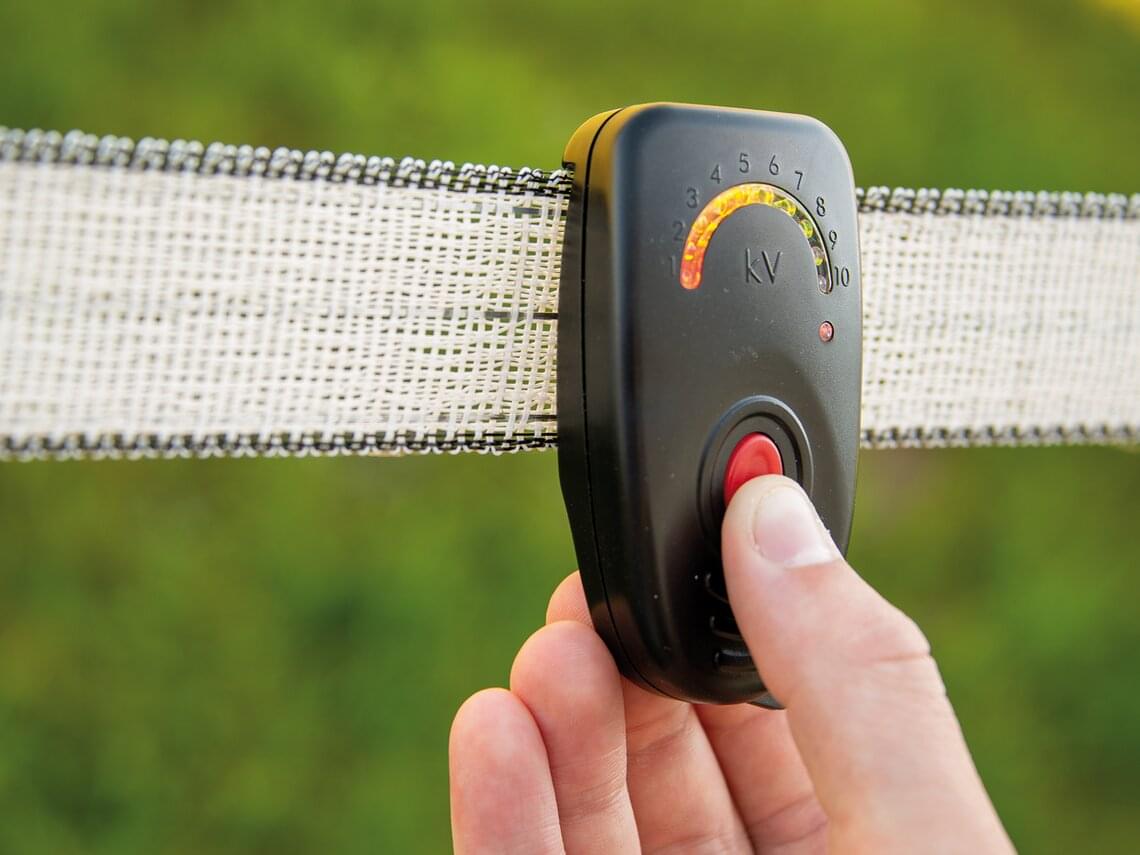Your fence routine with equipment from horizont
Fence testing made easy
Press information horizont group gmbh - Animal Care
Korbach, February 2021: With the new fence tester farmer® horizont launches a small and handy fence tester on the market, which quickly and reliably informs about the condition of the pasture fence thanks to its LED display. However, this requires the right technology and good handling.
Every day again
Nothing is more constant than impermanence. This is especially true for fencing systems, because external conditions can change from one moment to the next. Heavy rain and an improperly tensioned strand or a fallen branch are enough to cause serious problems. Daily inspections are therefore the key to fence safety and a fence inspector can be of significant benefit.
Voltage guaranteed
Before using it, the general condition of the fence should be checked. For example, it is important that the fence is free of vegetation and that the conductor material is not sagging. Posts, gates and insulators should also be properly mounted and placed.

If these basic requirements are met, the voltage can be measured with the help of the fence tester. To ensure a reliable result, the measurement should always be taken at the same point. The most meaningful measurement is taken at the furthest point from the fence unit. The voltage is lowest there and thus provides an important comparison value, as the common recommendations all assume a minimum voltage.
The correct voltage depends on the fenced animals and ground conditions. However, it is recommended to have at least 2,000 volts for animals that are easy to herd. In normal soil conditions, the voltage should be more than 4,000 volts - and up to 1,000 volts more in dry soils due to poor conductivity.

Easily measured
The farmer® fence tester provides these figures reliably. It measures up to 1,000 - 10,000 volts and, with its 10 colourful LEDs, provides information not only about the voltage but also about the quality of the fence. The light display has a colour spectrum from red to green and is slightly recessed in the device to ensure good readability even in strong light. Another LED provides information about the status of the battery and the button, which is also recessed, prevents unintentional operation.
If you want more precise information about the voltage of your fence, you can also use one of horizont's digital measuring devices. The ranger® fence tester or the turbomax® fence scout are ideal for this purpose, as they have other functions in addition to the exact output of the voltage.
However, the best device is of no use if it is used incorrectly. Fence testers are often only partially applied to the conductor material. For a reliable result, however, the tester must have full-surface contact with the tape or stranded wire. The farmer® fence tester therefore has a wide contact strip on the back of the housing, which enables good contact even with wide strips.
Properly honed
If the voltage of the fence is correctly recorded, the earthing of the fence system is checked. This can also change depending on the season and weather and should be checked regularly. But how do you turn it on?!
A short circuit can help and is the quickest and most efficient way to test the quality of the earthing. To do this, make a connection between the fence and the ground at a distance of about 50 m from the pasture fence unit. The voltage measured at the ground stake should then be below 1,000 volts. If this is not the case, additional ground stakes must be placed.
Cleanly documented
Just as important as the standard inspection of your fencing is good documentation. There are a number of ways to do this, and you can find a particularly nice one in our pasture fence guide on our website. Here you can download our free electric fence diary, which provides you with lots of tips and advice and, above all, makes fence documentation easier.


